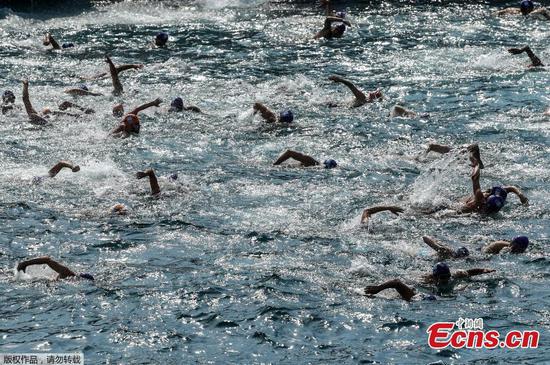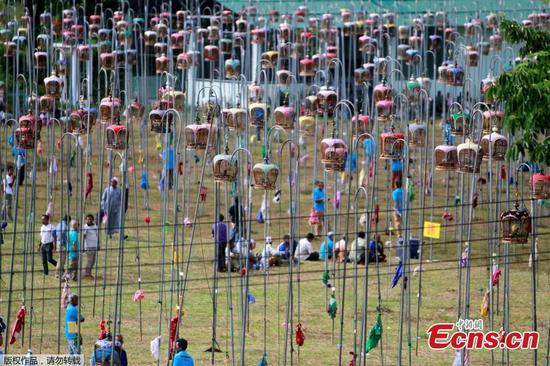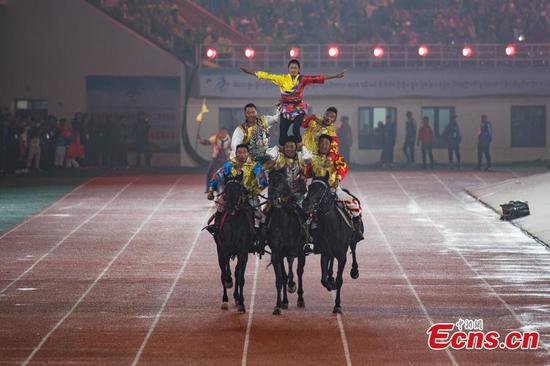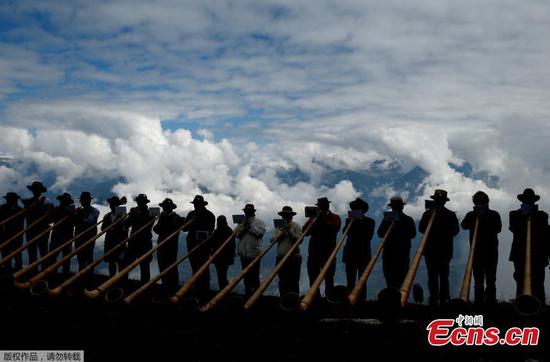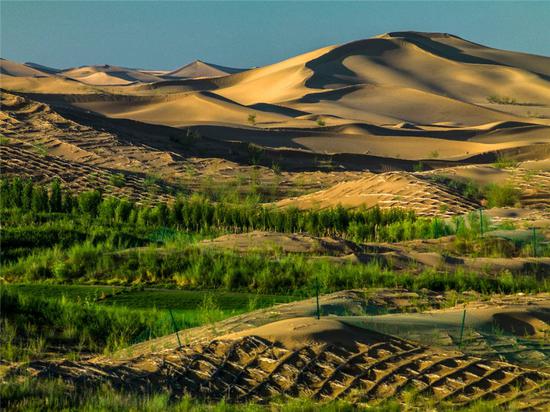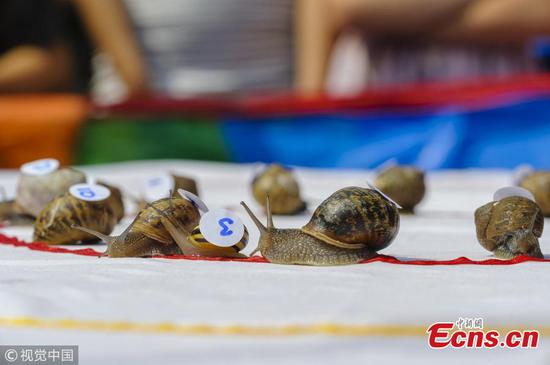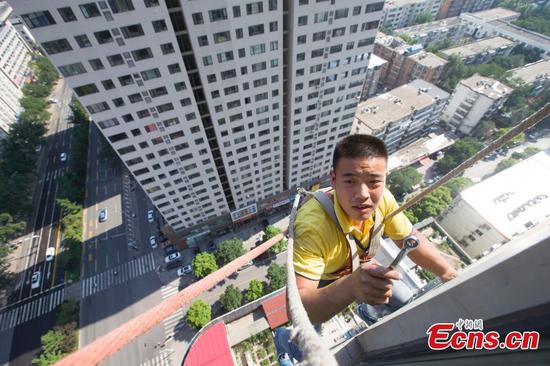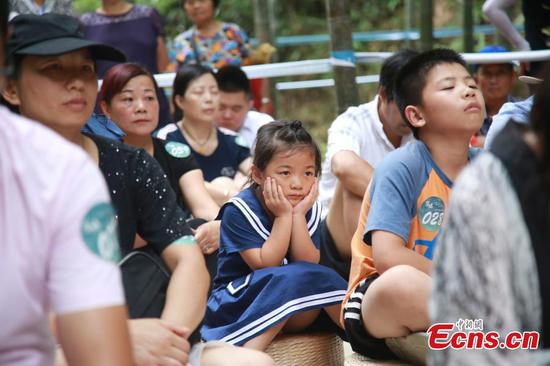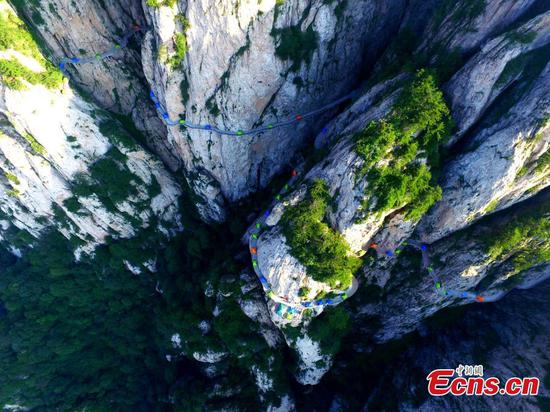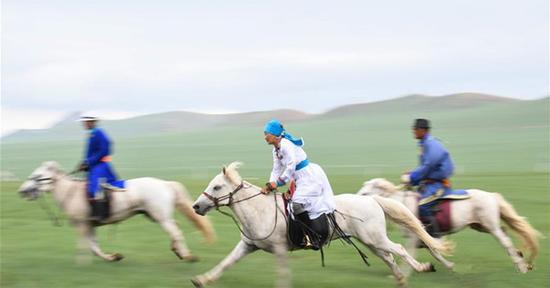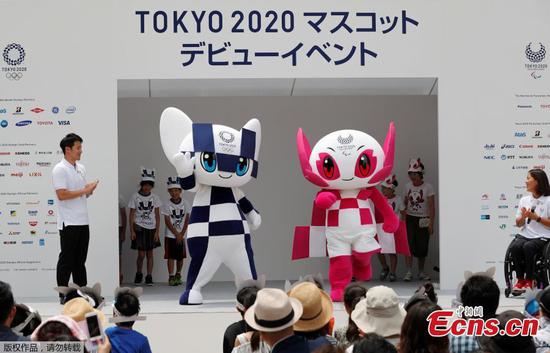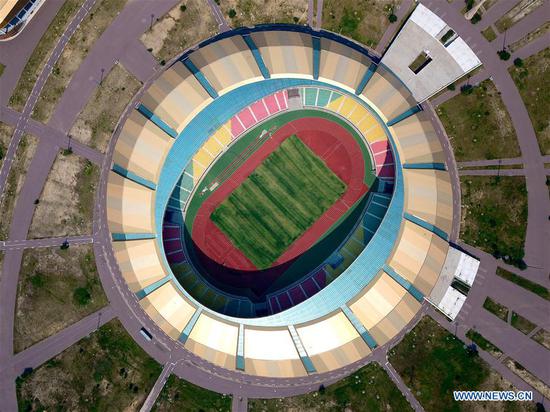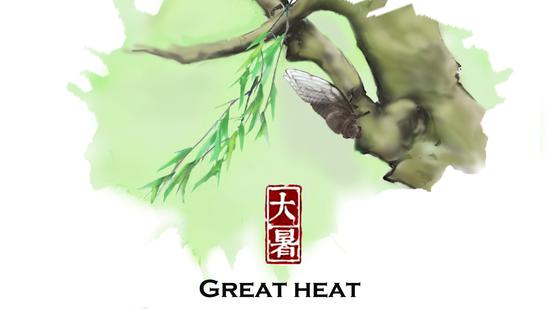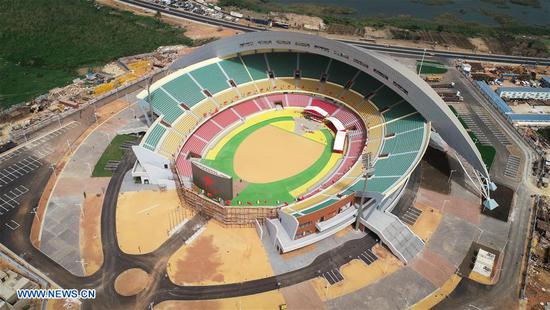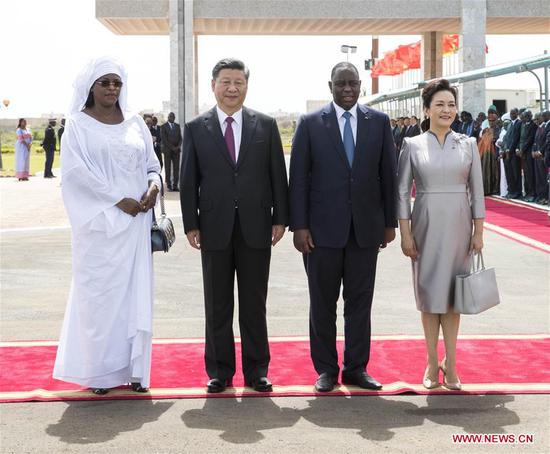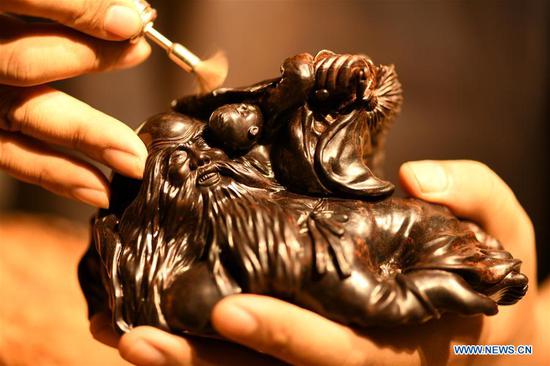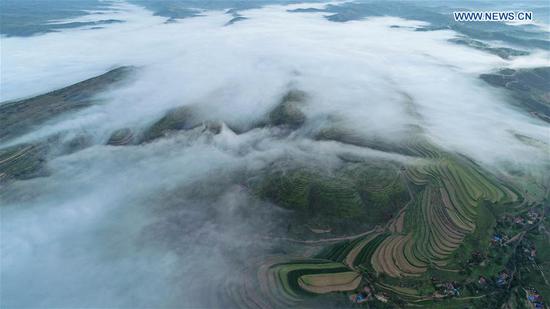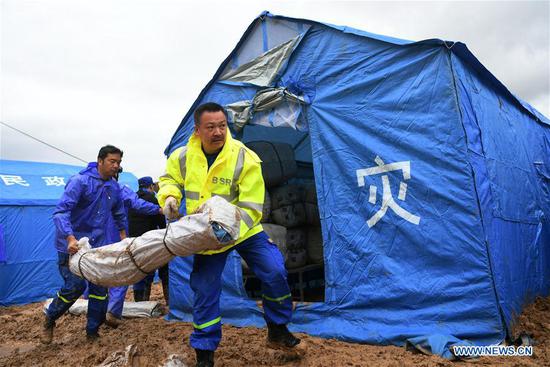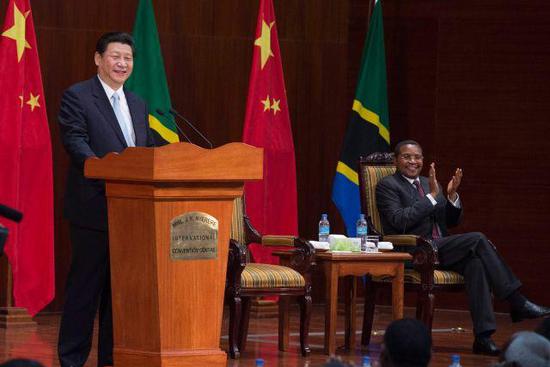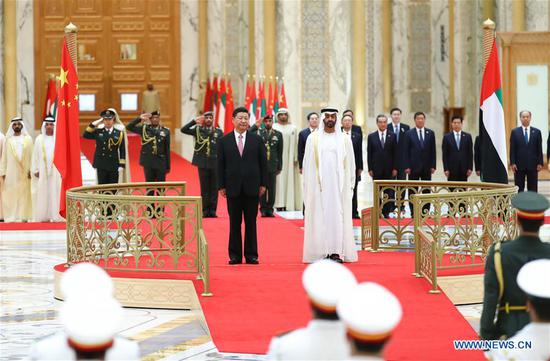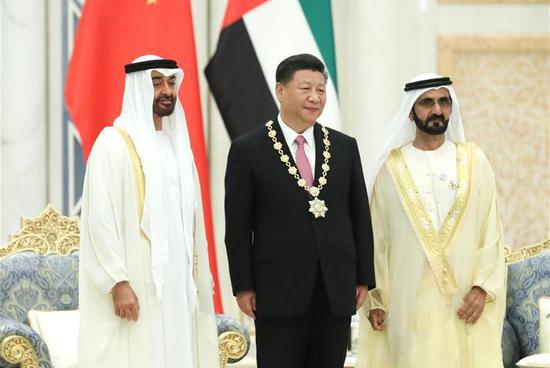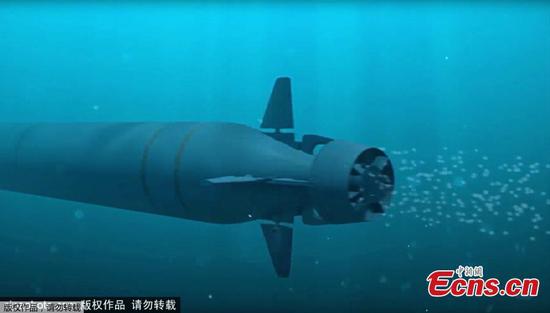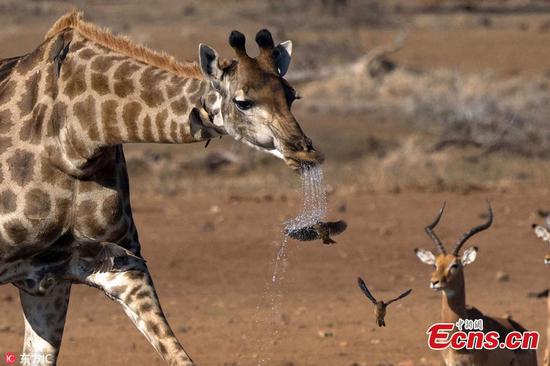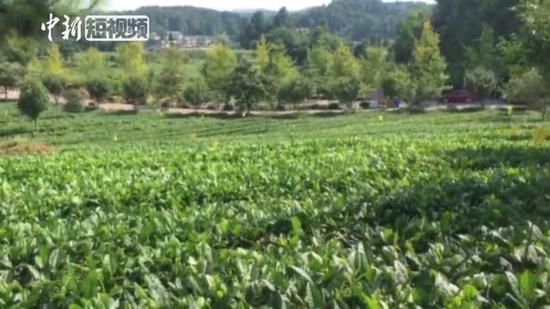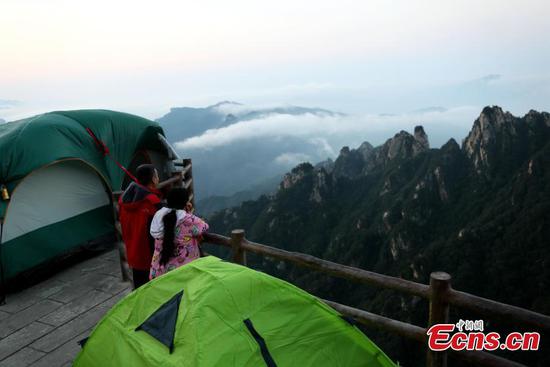Next time when your kids ask you to bring them a star from the sky, you don't have to shrug and walk away. Tell them to wait, instead.
A group of Chinese scientists are mulling a bold idea to capture a small near-Earth asteroid, which might be a potential threat, and bring it back to Earth to exploit its resources.
"Sounds like science-fiction, but I believe it can be realized," said Li Mingtao, a researcher at the National Space Science Center under the Chinese Academy of Sciences.
Li and his team raised the audacious idea in a contest of innovative future technologies recently held in Shenzhen, south China's Guangdong Province, and entered the finals with another 59 projects.
The contest encouraged young Chinese scientists to conceive groundbreaking technologies and trigger innovation.
The process could start with a spacecraft carrying a huge bag to wrap a small asteroid and push it back over the Earth. Then it would unfold a heat shield to reduce the velocity of the asteroid when it enters the Earth's atmosphere, and control it to safely land in a no-human zone, Li explained.
Huang Wei, chief engineer at an institute of the China Academy of Space Technology, said the idea is very creative and could help promote the development of space technologies.
Li said many key technologies would have to be tackled to achieve the goal. One challenge would be finding a suitable target. The smaller an asteroid, the more difficult it is to discover. Telescopes on the ground can only find small asteroids when they come very close.
Li is working with space engineers at the Qian Xuesen Laboratory of Space Technology, under the China Aerospace Science and Technology Corporation, to draw up a plan for a satellite constellation on the heliocentric Venus-like orbit. The satellites will be used to search for and analyze near-Earth small celestial bodies with a diameter around 10 meters.
He said the hardest challenge might be the control of the asteroid after it enters the Earth's atmosphere. They must design a heat shield, and drop the speed of the asteroid from 12.5 km per second to about 140 meters per second before it touches down at a designated area.
To analyze the feasibility of the plan, Li's team has targeted a small asteroid more than 100 million km away. It's about 6.4 meters in diameter and weighs several hundred tonnes.
The asteroid's main components are still not clear, and need more observation and analysis to determine. Li calculated the proper time to launch an asteroid catcher would be 2029, and it could be brought back to Earth in 2034.
Some near-Earth asteroids are at risk of colliding with Earth. An asteroid entered the Earth's atmosphere over Russia in February 2013, and exploded above Chelyabinsk, leaving more than 1,500 people injured and about 3,000 buildings damaged.
Many scientists believe the extinction of dinosaurs was caused by the collision of an asteroid or a comet with the Earth.
However, many asteroids contain resources with great scientific and economic values. The study of the formation and evolution of asteroids might shed light on the origins of the solar system, as well as the origins of life and water on Earth.
NASA is reportedly planning to launch a spacecraft in 2022, which is due to arrive at an asteroid named Psyche in 2026. More than 95 percent of Psyche appears to be made of iron, nickel, and other metals such as gold, platinum and copper.
"Space mining might become a new engine for the global economy," said Li.
So far, the United States and Japan have landed probes on asteroids. Japan has brought back a sample.
After sending a probe to Mars in 2020, China plans to explore asteroids and even land on one to conduct scientific research.
"Unlike missions to bring samples back, we aim to bring back a whole asteroid weighing several hundred tonnes, which could turn asteroids with a potential threat to Earth into usable resources," said Li.
Li, 36, began dreaming of space when he was growing up in the countryside. He liked gazing at the stars, and watching meteors flying across the sky. He studied spacecraft design at university.
After joining the National Space Science Center, he took part in China's space science programs, and helped design the trajectory for the Chang'e-2 probe to the second Lagrange point of the Sun-Earth system. The probe is China's farthest flying spacecraft.
Li often talked with colleagues about whether they could predict the landing points of shooting stars.
One day, an idea struck him: why not catch an asteroid and control it to land at a designated area?
"Our analysis shows that maneuvering a small asteroid is feasible in principle, and could bring enormous economic and social benefits," said Li.
"Preventing the danger of near-Earth asteroids will also help secure the shared future of mankind," he added.









